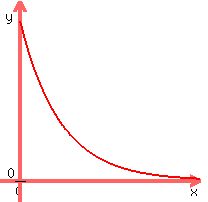Question 1069666: Det. Robert Goren is investigating a homicide, and the medical examiner tells him that when he arrived at 6:00 p.m., the body had a temperature of 95.3 degrees Fahrenheit. By the time Nichols had arrived an hour later (at 7:00), he checks again and determines the temperature to be 94.9 degrees. The ambient air temperature is 90 degrees. Use the equation 𝑇(𝑡) = 𝑎𝑒^(−𝑘𝑡) + 90 to determine when the victim was killed. (The normal body temperature is 98.6 degrees. Round k to 3 decimal places and find the time of death to the nearest minute.
I'm really confused on how to go about this problem, any help would be greatly appreciated!
Answer by KMST(5328)   (Show Source): (Show Source):
You can put this solution on YOUR website!  makes some sense. makes some sense.
 would be the body temperature in degrees at some time would be the body temperature in degrees at some time  . .
ONE WAY TO SOLVE:
We define  = time in minutes after 6:00 p.m.; = time in minutes after 6:00 p.m.;
substitute  and and  to find to find  and and  , ,
and then use  to find the time the victim died. to find the time the victim died.
Adding the negative time we find to 6:00 p.m. gives us the murder time.
It gets easier if we solve  for what we want to start, for what we want to start,
and then just plug stuff in.



At 6:00 p.m.  <--> <--> and and  , so , so
 --> --> --> -->
At 7:00 p.m.  and and  , so , so
 --> --> --> --> --> -->
At the time the victim died,  , so , so
 --> --> --> --> --> --> (rounded to the nearest minute) (rounded to the nearest minute)
Since  , ,
time of death =  . .
EXPLANATION AND ALTERNATE WAY TO SOLVE:
You may have heard in class that
 for some for some  , , 
models exponential decay;
that it asymptotically approaches  , ,
or even that  . .
 (with some (with some  and and  too) makes sense. too) makes sense.
It would have  , ,
and would decrease towards  , which is the ambient temperature in degrees. , which is the ambient temperature in degrees.
Nothing else is specified about that function,
so we will say that
 = time since 6:00 p.m., in minutes. = time since 6:00 p.m., in minutes.
So,  tells us that tells us that
 --> -->  ---> ---> 
An hour later,  , ,
and  tells us that tells us that
 --> -->  --> --> 
-->  --> -->  --> --> 
-->  --> --> 
Now we have the function

and we want to find  for for 






 (rounded to the nearest minute) (rounded to the nearest minute)
Since  , ,
time of death =  . .
|
|
|